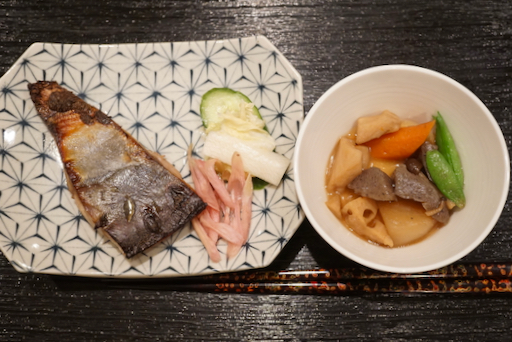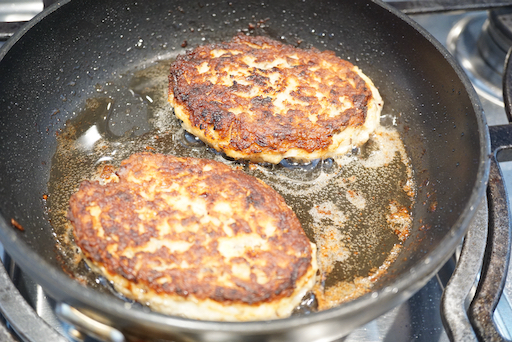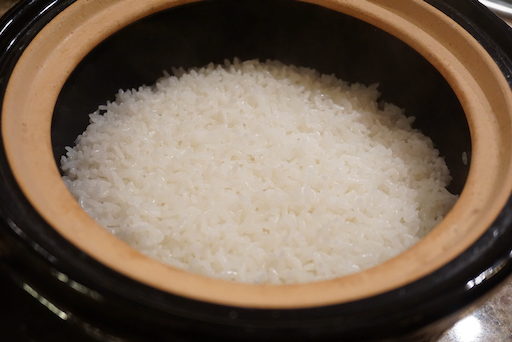This dish is the result of an unexpected “silver lining” derived from the Covid epidemic. Because of Covid, we decided as a safety precaution, not to go to the grocery store but rather have groceries delivered. This forced us out of our usual routines and by necessity introduced us to new options. One of which was buying groceries from HMart Korean grocery store via the Instacart. As a benefit, we are now getting items which were not available from our usual grocery stores. One such item is fresh “reckon” 蓮根 or lotus root. (It is the floating stalk, not the root of a water lily). Even at our Japanese grocery store, the only reckon we could get was cleaned, boiled and sold in a package. It is easier to use than fresh renkon but it limits the dishes that can be made from it. For example, I could not have made this renkon ball or dumpling dish レンコンまんじゅう shown below from packaged prepared renkon. But with fresh renkon available I could. I served the dumplings in a very gentle broth, with garnishes of edamame 枝豆, and simply fried reckon slices.
Instructions for the renkon balls
Ingredients:
One segment of fresh renkon (#1) (after grated, #4, it was slightly more than 700grams)
2 tbs potato starch
3 large shrimp, thawed, shell removed and cut into small chunks then salted
10-15 shelled edamame
For broth
1 cup kelp and bonito broth (I used a dashi pack)
1 tbs of white dashi “shirt-dashi” 白だし seasoning or 1tbs each mirin and light colored soy sauce (or to taste).
Directions:
One segment of fresh renkon (#1).
Remove the ends of the segment of renkon and peel the skin (#2 and #3)
Finely grate the renkon and drain to remove excess moisture (#4)
Mix in the corn starch, shrimp and edamame. Make small balls about one inch in diameter.
Deep fry at 300-320 F for 7-10 minutes (#5)
Drain (#6)
Assembly:
I cut one renkon ball in half and placed the halves in a bowl. I added the fried renkon and edamame and poured in the hot broth. You can also reheat everything in the broth and serve.
This is a very good dish. The contrast of elastic texture of the renkon balls and crunchy fried renkon is wonderful. The shrimp has similar texture to the renkon ball and since it was salted, it imparts briny salty burst of flavors. I made the broth very gentle and light which also went well.



























